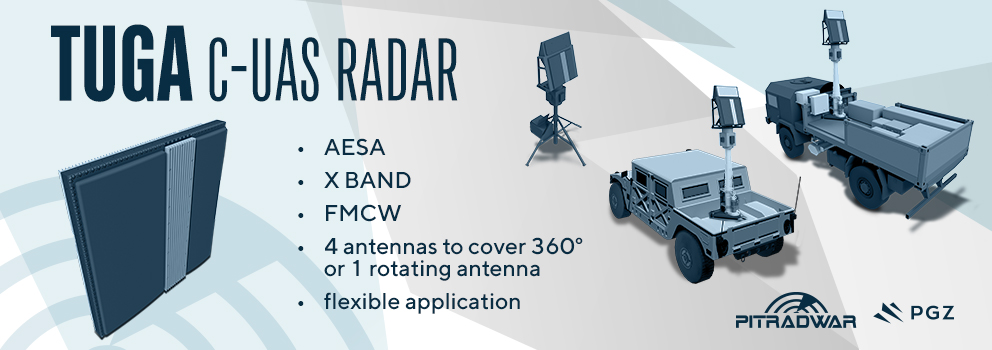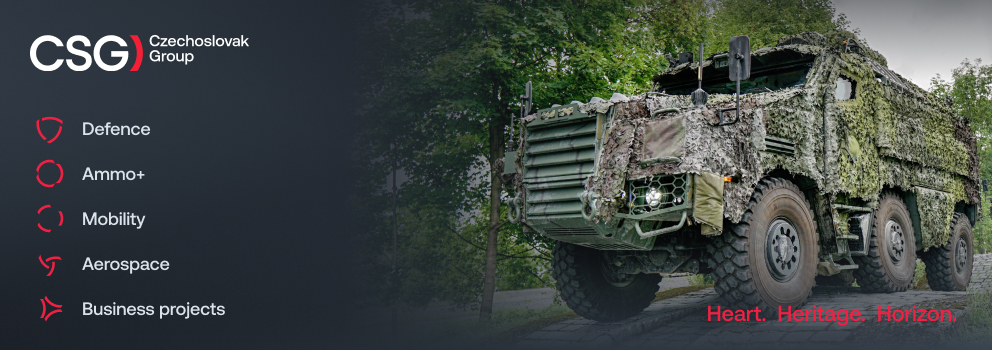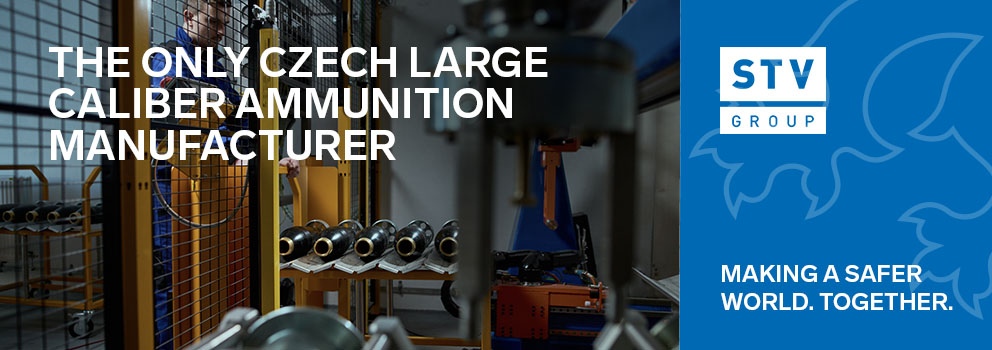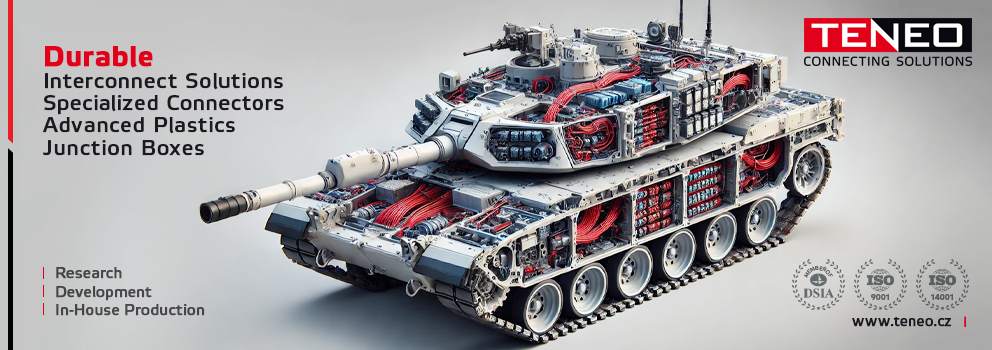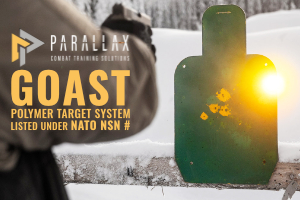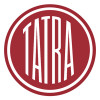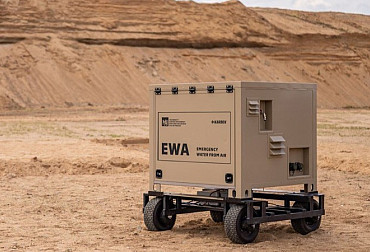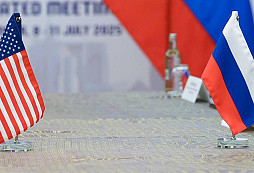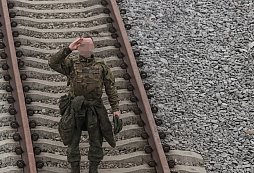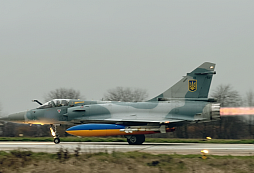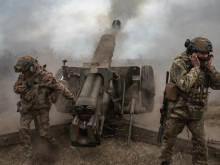Rapidly developing technologies are becoming increasingly important
At the recent IDET 2025 trade fair, exhibitors were clearly keen to capitalize on increased demand for armaments, and not just from the Czech Ministry of Defense. In addition to offers related to projects for the replacement and development of the main types of equipment used by the Czech Armed Forces, there were also less conspicuous presentations of products and technologies, including expert meetings. Technological developments in the field of 3D printing were also impossible to overlook.
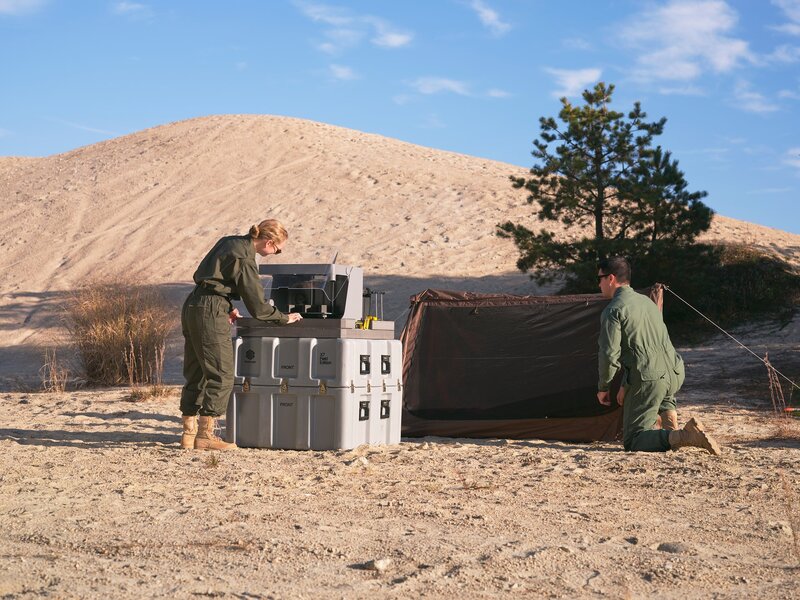
3D printing
3D printing is typically a dual-use technology, where spare parts can be produced for both civilian and military purposes. The metal and plastic products on display, including complex structures and composite materials, showed that this technology can be flexibly adapted to very specific requirements and that the technology is advancing rapidly. At the stands of several companies operating in this field, it was possible to obtain information not only on the possibilities of 3D printing, but also on the use of suitable 3D printers, the materials used, the chosen 3D printing technique, and the selection and application of 3D scanners. These are used to analyze objects/templates and create digital 3D (three-dimensional) models, which are then used to print the desired shape and structure of the products.
For example, 3Dees Industries presented HP Multi Jet Fusion technology for the production of parts, which enables fast and accurate production of plastic components in single-piece, small-batch, and high-volume production. This technology excels not only in its speed but also in its ability to produce parts with high strength and accuracy. A completely new and revolutionary technology presented here is CBAM (composite-based additive manufacturing technology), which is used by the American company Impossible Objects for serial production. This technology enables the production of composite parts made of glass or carbon fiber, into which PEEK (a tough thermoplastic) is printed in a matter of seconds. The products are characterized by high strength, toughness, light weight, and temperature resistance.
Compared to conventional methods such as machining or plastic injection molding, 3D printing offers significant cost savings and shorter production times. 3D printing is also proving its worth in connection with the conflict in Ukraine, particularly with regard to requirements for speed, adaptability, and functionality.
In connection with current conflicts, there is growing interest in the efficient and autonomous production of drones using 3D printing. The Czech company 3DFENSE presented its work in this area. Over the past few years, it has developed a fully functional additive manufacturing system for drones, mainly of the VTOL type, i.e., machines capable of vertical takeoff and landing without the need for a runway. It is in this category that 3D printing offers a number of advantages over traditional manufacturing methods, such as manual lamination of composite airframes or foam molding. The use of additive manufacturing allows for a much faster response to design changes, optimization of the design for specific missions, and a significant reduction in the need for human labor. Progress in this direction can be seen in the company's production cell (P30), which can produce up to 200 fixed-wing drones per month with only two workers on an eight-hour shift. This result was achieved through consistent optimization of the drone design and the selection of suitable printing technologies.
A combination of three proprietary filaments is used as the manufacturing material: PolyLight, FlexiLight, and PolyAir. This technology makes it possible to produce a drone that combines rigidity, flexibility, and low weight. Each type of material has its place in the design, and their combination eliminates the disadvantages commonly associated with 3D printing, such as lower impact resistance or lower strength compared to composites. The entire design system is designed to be as efficient as possible in terms of supply and assembly. The company's stated goal is to transition to fully autonomous production that will operate without human intervention in the future. In the case of drone production, there is a demand for fast, inexpensive, and automated production, which additive manufacturing is rapidly moving toward. In the not too distant future, it can be assumed that autonomous production will be complemented by autonomous use, i.e., drones will fly out of the production container with their mission already stored. This will eliminate any risk to human life. The entire production system can be easily scaled up to a size that will serve as a significant deterrent.
Czech-Israeli Conference
During the fair, a Czech-Israeli conference entitled “Modern Technologies Used in Operation Swords of Iron” was also held on May 29. The individual presentations showcased advanced technologies and combat systems that were deployed during operations in Gaza following the Hamas attack on October 7, 2023. The aim of the conference was also to strengthen ties between Czech and Israeli defense industry companies and to explore ways of utilizing support for joint projects within EU and NATO programs. The conference featured presentations by representatives of Israeli companies showcasing combat systems for a wide range of applications on today's and tomorrow's battlefields. These included presentations of various types and modifications of drones, command and control systems, battlefield information gathering and sharing, including enemy targets, fire support assets, anti-drone defense, the Trophy Active Protection System (APS) for armored vehicles, and training methods.
One of the aspects of the development and use of new technologies and combat systems presented was the emphasis on maximum protection of one's own soldiers and the greatest possible effectiveness of one's own resources deployed against the enemy. In this regard, the presentation by the Czech-Israeli company Bagira, which specializes in training soldiers using modern simulation technologies, was also inspiring. The training includes, among other things, marksmanship or live-fire shooting skills, which better prepare soldiers for risky situations. During the mobilization in Israel, 360,000 reservists underwent training, and more than 200,000 soldiers have been trained over the past year. Units that trained on simulators achieved 35% better shooting skills than those that underwent standard training. Ukrainian soldiers undergo the same training. By simulating various combat situations and activities, the training prepares soldiers for specific missions and new tactics, including the use of experience from current conflicts. This training method would certainly be beneficial for preparing reserve units. Their timely preparation, including their equipment, can play an important role in an armed conflict, especially if it lasts for a long time.
Another interesting solution was presented by the Israeli company SMARTSHOOTER, which has developed a device to improve the accuracy and lethality of small arms. SMART SHOOTER technology increases operational effectiveness through its ability to accurately hit and destroy ground, air, static, or moving targets, day or night, using the SMASH fire control system. The latest and most advanced fire control system from this company is the “SMASH 3000.” It is an external add-on device that can be integrated into any type of military handgun. Once the user identifies the target (either manually or via a detection system) and locks onto it, the system tracks its movement and synchronizes the shot to ensure a fast and accurate hit on the target. The US Army recently decided to purchase this fire control system.
